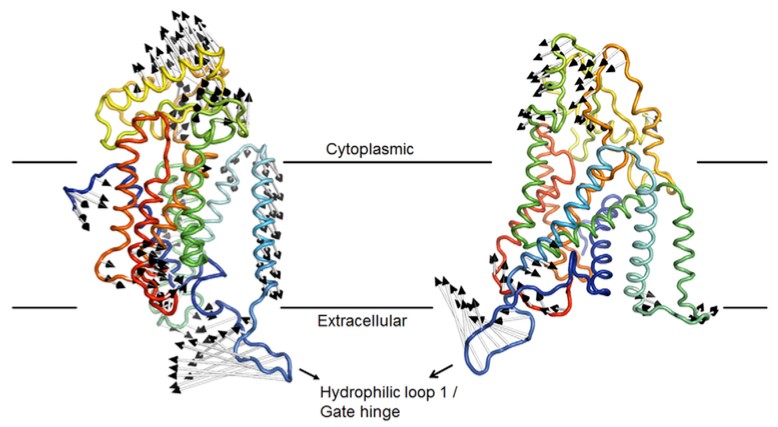Mempro™ Cell-Based Peptidase AD Production
Together with our experienced scientific elites and advanced Mempro™ cell-based expression system, Creative Biostructure can deliver you the firs-class services to produce high-quality peptidase AD.
Peptidase AD, also known as gamma secretase, is an integral membrane protein containing multiple subunits which can cleave single-span transmembrane proteins within their transmembrane domain. Four individual membrane proteins form the peptidase AD complex: PSEN1, nicastrin, APH-1, and PEN-2, and they are under heavily modification by proteolysis to activate the autocatalytic cleavage of presenilin. The peptidase AD complex conducts self-assembly and maturation in early ER, and then is transported to the late ER for interaction with their cleavage substrate. The most famous cleavage substrate of peptidase AD is amyloid precursor protein, which is closely related to Alzheimer’s disease. Researchers have already identified more than 180 mutations in PSEN1 sequence that result in a particularly severe Alzheimer’s disease, therefore structural studies of PSEN1 are an important part to understand and prevent Alzheimer’s disease.

Figure 1. Motions of eigenvector 1 mapped onto the structure of non-mature and mature PSEN1. (Neurobiology of Disease,2016)
Creative Biostructure is an expert in high-yield membrane protein production field based on our cell-based expression systems, we can offer you a full set of strategies for Mempro™ cell-based Peptidase AD production, including:
• Mempro™ Peptidase AD Production in Insect Cells System
Insect cells such as Sf9, Sf21 and High Five, are commonly applied for eukaryotic membrane protein expression. Mempro™ protein expression by insect cells system assures you the enhancement of expression and reduction of the truncated proteins at the same time, and easy to perform scale up production.
• Mempro™ Peptidase AD Production in Mammalian Cells System
Creative Biostructure can provide Mempro™ protein production in mammalian cells system. This system faciliates to produce membrane proteins with correct conformation and post-translational modifications in native state. Mempro™ protein production in mammalian cells system will deliver you the target membrane proteins with the best structural and functional features.
• Mempro™ Peptidase AD Production in Bacterial Cells System
Escherichia coli (E. coli) is the most popular bacterial host for membrane protein production. Our bacterial cells system has optimized Lemo21 (DE3) strain for our Mempro™ protein production, providing multiple options for the optimization of the production protocols. The fluorescence assay can facilitate to choose the optimal detergent to solubilize the target from the membrane, and to monitor the stability of the target membrane protein.
• Mempro™ Peptidase AD Production in Yeast Cells System
Single-celled yeast is an easy, quick and economic culture host and able to apply multiple post translation modifications for eukaryotic membrane protein. Yeast cell such as saccharomyces cerevisiae and pichia pastoris, are perfect eukaryotic hosts with following advantages: high cell densities, economic media, fast growth rates, etc.
Creative Biostructure is able to overcome all the membrane proteins production barriers by optimizing expression vectors, host strains, growth conditions, co-expression of helper proteins and fusion tags, etc, and able to produce high-quality Peptidase AD.
We offer various Mempro™ membrane protein production services. Please feel free to contact us for a detailed quote.
References:
A. K. Somavarapu, et al. (2016). The dynamic mechanism of presenilin-1 function: Sensitive gate dynamics and loop unplugging control protein access. Neurobiology of Disease, 89: 147-156.
A. M. Nikolakopoulou, et al. (2016). Presenilin 1 promotes trypsin-induced neuroprotection via the PAR2/ERK signaling pathway. Effects of presenilin 1 FAD mutations. Neurobiology of Aging, 42: 41-49.
X. Meckler, et al. (2016). Presenilin 1 and Presenilin 2 Target gamma-Secretase Complexes to Distinct Cellular Compartments. J. Biol. Chem., 291(24): 12821.